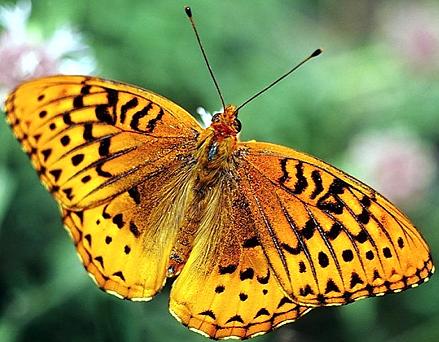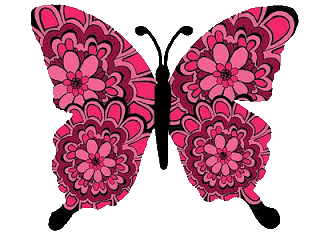Butterflies Arent For Free:- By Mrs.Maneka Gandhi
|
Butterflies Aren't For Free
By Mrs. Maneka Gandhi
On August 29 the officials who patrol the General Post Office found a parcel meant for Taiwan posted from a Delhi motel which contained 400 butterfly bodies. This is only one of the many parcels that they have caught in the last 5 years. Hundreds have slipped through. This may seem to be a harmless smuggling activity by botanists. In actuality the smuggling of butterflies and moths from India is as important as tigerskins.
If I told you that the life of your child depends on the life of a butterfly you might laugh. But it is true. Butterflies are a vital and unique part of the life support system. What will happen if butterflies die out? The survival of life itself is in danger. When they die, the plants die. Then all the insects that depend on these plants die. Then the birds who prey on these insects . Then the trees that depend on these birds to spread their seeds. Then the rain that comes because of these trees. Then the animals who live in these forests. And then man. Butterflies carry no diseases, nor are they parasites or predators of man or domestic animals. They pollinate flowers and many long tubular flowers cannot reproduce without them. Some butterflies live on the rotting corpses of small animals in the jungle. Butterflies live on diets that vary from mosses to cacti, but each species is limited to a small group of food plants. They eat plant pests like aphids and ants and weeds. In turn, they are eaten by lizards, spiders, birds, bats and monkeys, centipedes, mantids, ground beetles, ants, wasps, toads, tree frogs, lizards and rodents. In fact, many of the smaller insects would die if the butterfly died. The death of butterflies means a decrease in the numbers of their predators and parasites and an increase in their prey. In the process, the flowers and habitat are destroyed, birds and other insects lose their food and the entire ecosystem is thrown out of gear. It used to take thousands of years to destroy a species. Nowadays we do it in less than ten. Many butterfly species have already become extinct along with the plants that they fed on. There were thousands of species in India. Now there are less than a thousand left in India and, of these, another hundred are on the brink of extinction.
What are the reasons for the reduction in the numbers of butterfly species? The first is the destruction of greenery. The Purple Emperor has become rare because it lives in oak plantations of which there are very few left in the world. Most species are concentrated in the tropical and forest areas. These are disappearing in India at the rate of ten football fields a minute. The second is pesticides. DDT, Malathion and the dozens of other pesticides that are used so carelessly in India don't only kill 30,000 human beings a year from direct poisoning, they have killed off entire species of plants, birds and insects that are vital for man's survival. Not just the soil gets poisoned, but the small bodies of water that sustain so much life get also toxified with pesticide. The third is the greed of collectors. About a thousand pinned specimens of the Copper Butterfly are found decaying in museums but the living creatures has gone forever, destroyed by the year 1848 by collectors. Butterflies from India are taken abroad by people who come on tourist visas and smuggle out the insects. Recently, two German nationals were caught smuggling out a consignment of butterflies. There were four big cardboard cartons which contained about 18 small plastic boxes. About 15,000 butterflies and moths were packed in them, including about 600 rare and endangered species. They were being taken to be sold abroad. Dealers come to India and encourage the local people to capture them, but the methods are so crude that for every perfect specimen, at least 1000 are thrown away because their wings have been crushed. For every single butterfly of a rare species smuggled out, the local people capture thousands of butterflies of unwanted species and throw them away as well. Our Himalayan butterflies are being killed by tourists posing as nature lovers and the many plants they pollinate are now endangered by this international trade estimated to be worth a hundred million dollars. Species of rare Swallowtail butterflies found only in high altitude areas such as Talang La, Bara Lacha and Rohtang, fetch several hundred dollars in the international market and are being systematically plundered year after year.
From the Northeast, Sikkim and the Andaman islands, these butterflies are taken to Hongkong, Japan, Germany, UK, Taiwan and Singapore and either sold to collectors or mounted as jewellery and sold to tourists. But we too are to blame. The government's Gauhati handicrafts shop is selling dead butterflies made into wall paintings. There is a large insect fair in Frankfurt every year. Only the West could make the dead bodies of tiny useful beautiful beings into a sale item for collectors. At this fair which is heavily attended , thousands of Indian butterflies and moths are shown for sale. Our Indian Ambassadors go regularly to this fair and the Indian government is well aware of it. Not one person has questioned how the buterflies got there.Log on to the fair site - I do not know the address - and start complaining. Maybe letters to the police , to the ambassador of Germany in your country and to the Prime Minister and Home Minister of India could be the first step. Not just India, Bangaldesh, Nepal and Bhutan are equally well represented - the " eco-tourists" are busy with their nets in all these hapless countries. The destination of living butterflies which earn several million dollars are the private collectors or the so-called `butterfly houses' in Japan, Europe, and the USA. Trade is flourishing in various parts of India. Sikkim, northeast India and Andaman & Nicobar islands are major places for commercial collection. In fact, our government gives permission for people to catch buterflies for `scientific work'. A large number of these find their way to commercial collections or butterfly houses. Now the Government of India’s department of biotechnology is spending crores of rupees to make butterfly zoos in Bangalore where butterflies will be brought from all over – which means thousands will be killed on catching - and they will live for only a few days as their plants will be alien. Some bureaucrats hatching this mad scheme will get rich in the building process - who cares what will happen to India.
Butterflies are caught with a net and put in folded paper flaps in which they can live for 15 days. They are then injected with a chemical that keeps them stiff but alive for two months, packed into envelopes and sent abroad to be killed later by having a nicotine-poisoned pin driven through their bodies. They take some time to die, fluttering their wings till the end. Our Himalayan flowers are dying out because the butterfly collectors have reached there. When butterflies die, the pests that they eat increase and the farmer is threatened. He who benefits by having his pests eaten by caterpillars and his crops enhanced by cross pollination is hurt. The ecosystem that sustains us is being thrown out of gear. The theft of butterflies from the Himalayas has serious implications for the preservation of biodiversity. In the absence of honeybees at high altitudes, the swallowtail butterflies play a key role in pollination of plants. The collection of these butterflies is a threat to high altitude Himalayan flora. How can we protect them? Some people propose commercial farming. But most butterflies don't breed in captivity because each sub-species depends on specific flower nectar. So, instead, we should create butterfly reserves where they are left alone. You must report people who kill them. Tourists to our mountains and Sikkim should be checked carefully. Customs and the post office should check every parcel going abroad as thousands of butterflies are sent this way. Stop hanging dead creatures in your house and report shops that sell them. Nature lovers should be taught to appreciate the hobby of butterfly watching and photographing them, not catching them with butterfly kits. Stop these silly zoology departments in colleges from encouraging their students to get hundreds of dead specimens of butterflies to make them into “ albums” Write to the governments of Assam and the Andamans and tell them to stop killing and selling butterflies officially. ----------------------------------------------------- Author: Mrs. Maneka Gandhi, People for Animals, 14, Ashoka Road, New Delhi-110001 ----------------------------------------------------- Mail to : Ahimsa Foundation |
|||||




